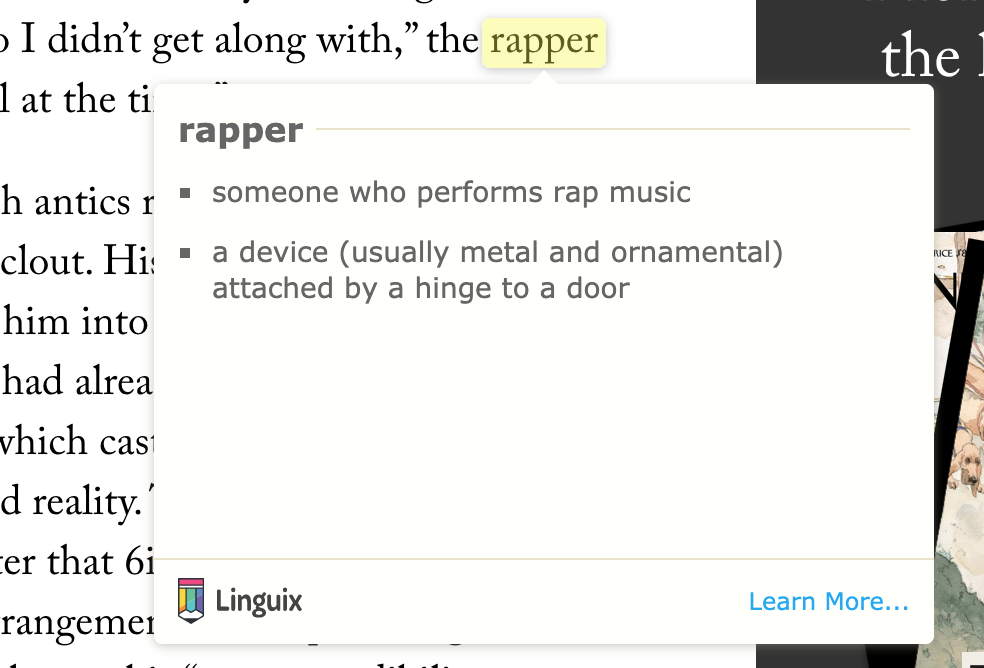
Of course, "pumping" English to the level of a native speaker is very difficult, and even that is simply not necessary. But no one forbids and strive for this - for example, in order to better adapt after moving to an English-speaking country or gaining new career development opportunities.
But how to do that? I found an interesting
post describing practical ways to improve the language and prepared its adapted translation.
Step # 1: learn English dialects
First of all, before trying to raise the level of the language to the level of the carrier, you need to decide what kind of carrier it is. There are so many varieties of English that finding two native speakers who speak identically is practically unrealistic.
It is also important to understand and that it is not worth overestimating the importance of a deep study of all dialects. The main task at this stage is simply to understand how many basic dialects there are and how many of them you can actually encounter. Then you need to train to develop the ability to perceive the language by ear, regardless of the accent of the speaker.
Here's a
good article on how many English dialects actually exist.
Step # 2: Simulate
Auditory perception is important, but you cannot go far with this skill alone. It is necessary to develop the ability of oral speech. If you have the task of learning to speak as close as possible to the level of a native speaker, then you need to pay great attention to pronunciation.
It is important to try to mimic the pronunciation of the medium. It is not as easy as it may seem. The main thing is to understand that imitation refers specifically to pronunciation, do not try to repeat the words spoken by him during the dialogue, this does not look very beautiful. However, if possible, then it is worthwhile to find a native speaker specifically for dialogues in order to understand and train pronunciation. For this purpose, for example, the
italki application is
suitable .

It’s a good idea to record yourself during such conversations in order to compare your pronunciation with the pronunciation of the medium.
One more tip: it’s very useful to practice in front of the mirror and monitor the movement of your own lips. Watch the native speakers “move their mouths” when they speak, and try to repeat it too.
Step # 3: control the connecting sounds and rhythm
One of the main difficulties for learners of English is to listen to separate words from a sentence. If you compare the way a real person says, and the computer generated by the voice reads the text, the difference will be enormous. A person does not separate words so clearly, as a result, for a non-carrier, it all looks like a mess of sounds. Once through practice you solve this problem, another will arise: how to learn to speak the same way?
Here are some ways to learn how to speak like carriers and to better perceive their speech by ear:
- Remember the “combining effect” : many native speakers speak so quickly that the consonants at the end of words merge with the vowels of the following words. For example, 'an apple' may sound like 'a napple' when it speaks a medium.
- Compound sounds : when two specific sounds connect in a sentence, they often need an additional connecting sound. For example, when the words 'I' and 'am' go together in a sentence (which happens very often), a connecting sound / j / arises between them and everything sounds like 'I yam'. As a result, the listener hears words that are actually not there. So to facilitate the perception of oral speech, you need to remember this habit, and also try to imitate it in oral speech.
- Removing sounds : when one word ends with the same sound from which the next begins, two such sounds turn into one. For example, in the phrase 'I met Tom', the second and third words begin with 't'. The media will pronounce the phrase like this: I me Tom '. Copy this habit too.
As for the rhythm, then in each language it is different. For example, the rhythms in French and English are fundamentally different. This is usually expressed in the way accents fall on syllables and words in a sentence. For example, the phrase 'I went to the cinema' written in the notation of stressed and unstressed syllables will look like this - 00oo0oo ('0' is used to indicate stressed syllable). It is necessary to study how such stresses in the sentence are put by the carriers and, of course, copy this.
Step # 4: using conversation and slang
Of course, you can “sound” like a carrier only using vocabulary that forms the language today. There are many phrasal verbs in English ('I get on with my brother' - you have a good relationship with your brother), colloquial words (colloquialisms, for example 'I was stopped at the club's door by the bouncer' - bouncer here is a guard).
Slang is a subspecies of colloquial vocabulary, but you need to be very careful with this part of it. When using slang, you run the risk of sounding rude and even sometimes aggressive. So, having chosen a certain dialect of English, study the common colloquial words in it and include them in your vocabulary.
It is also important to study the synonyms of ordinary words and try to remember the meanings of unfamiliar words encountered - so you can find out more “native” options. This extension may be suitable for
Chrome or
Firefox - it shows the definitions of English words and helps to find synonyms when writing text.

Step # 5: using idioms
Idioms are another great way to sound like a native speaker. Here you also need to be careful - if you talk only in idioms and sayings, you will look something like this (only in English):
You also need to figure out how much the idiom is generally used today. For example, the phrase 'It's raining cats and dogs', meaning heavy rain, is almost never found today. Yes, you will most likely be understood, but you will look like a time traveler, moreover, who has arrived from a rather distant past.
Therefore, a good idea here is to first make a list of idioms that you really hear - in ordinary conversations or, if there is not much such practice, in current TV shows about our time.
By the way, I already published a post with a selection of
14 useful idioms that are found in modern offices.
That's it for today, thanks for watching! I hope the material turned out to be useful.